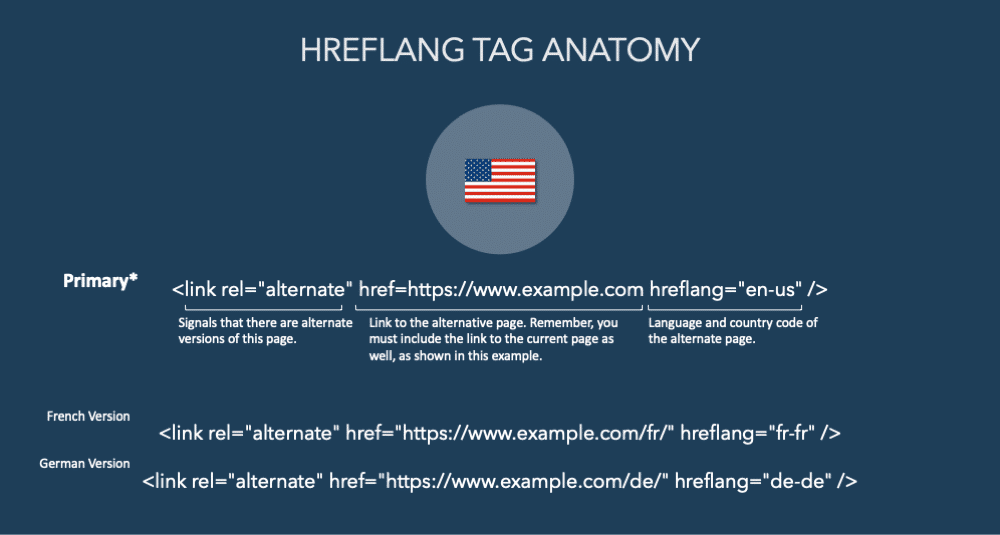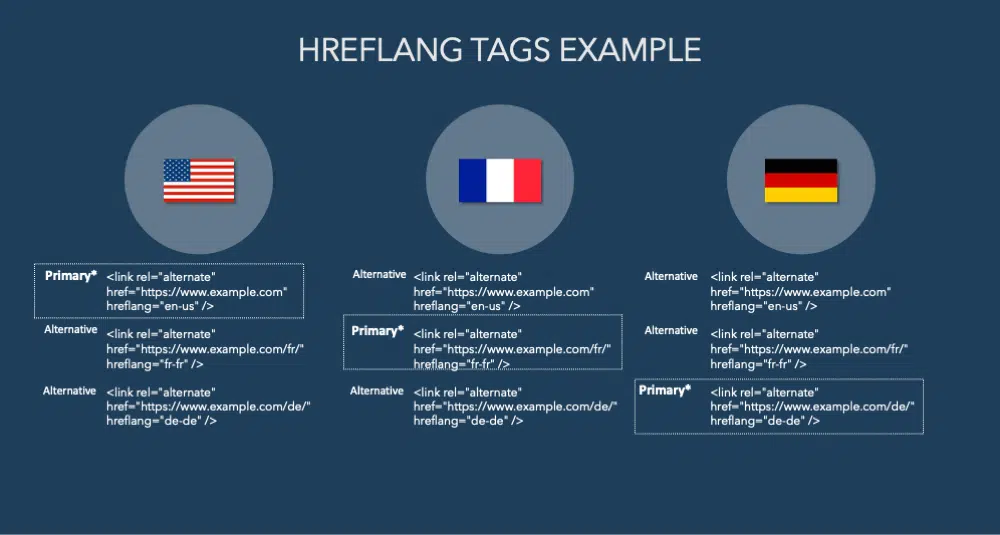Hreflang tags are html tags that are added to theof webpages that provide signals to search engines that there are alternate versions of the page.
The alternate versions typically contain translated versions of the webpage in different languages. However, they can sometimes be in the same language but for different countries. For example, if you had a page in Spanish targeting Mexico, you might want a different version for your audience located in Spain. That’s where hreflang tags come in handy!


